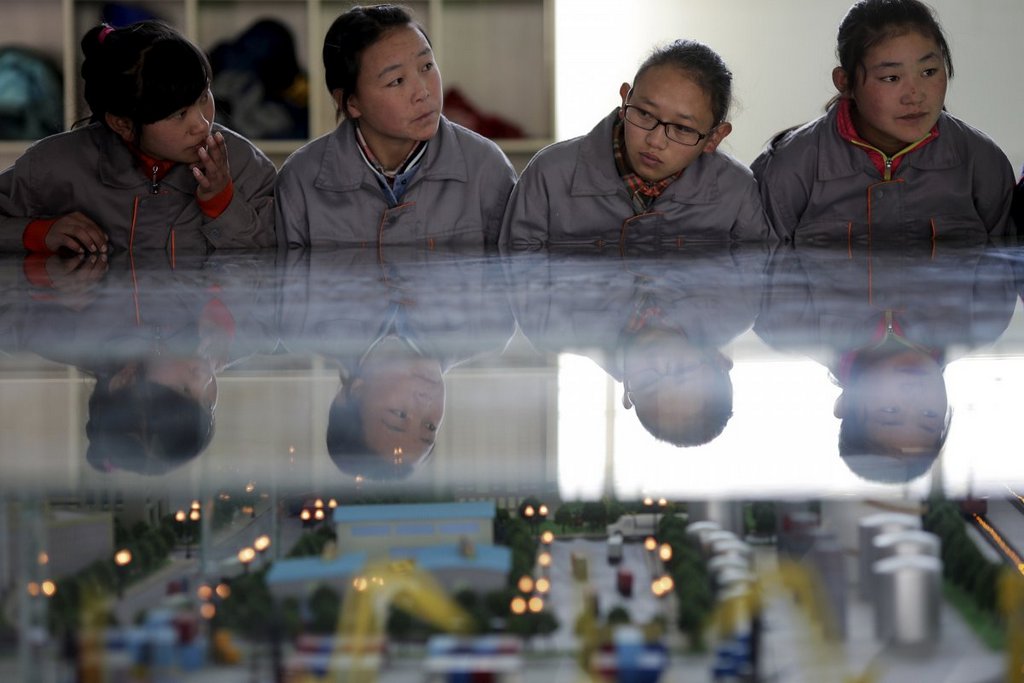20+ striking photos show the many sides of daily life in Tibet
If Tibet is on your travel bucket list, you’ll need to plan ahead.
Tibet Entry Permits are required to enter the country for non-Chinese citizens, and you’ll probably want to get into shape, too — at an average altitude of around 4,500 meters (or 14,700 feet), you might suffer from altitude sickness.
However, the views of Mount Everest, the Potala Palace, and Namtso will make your efforts extremely worthwhile.
Ahead, 20 images of the rich culture you’ll find across the Tibet Autonomous Region.
Tibet, home to the world’s highest plateau, has been dubbed “the roof of the world.”
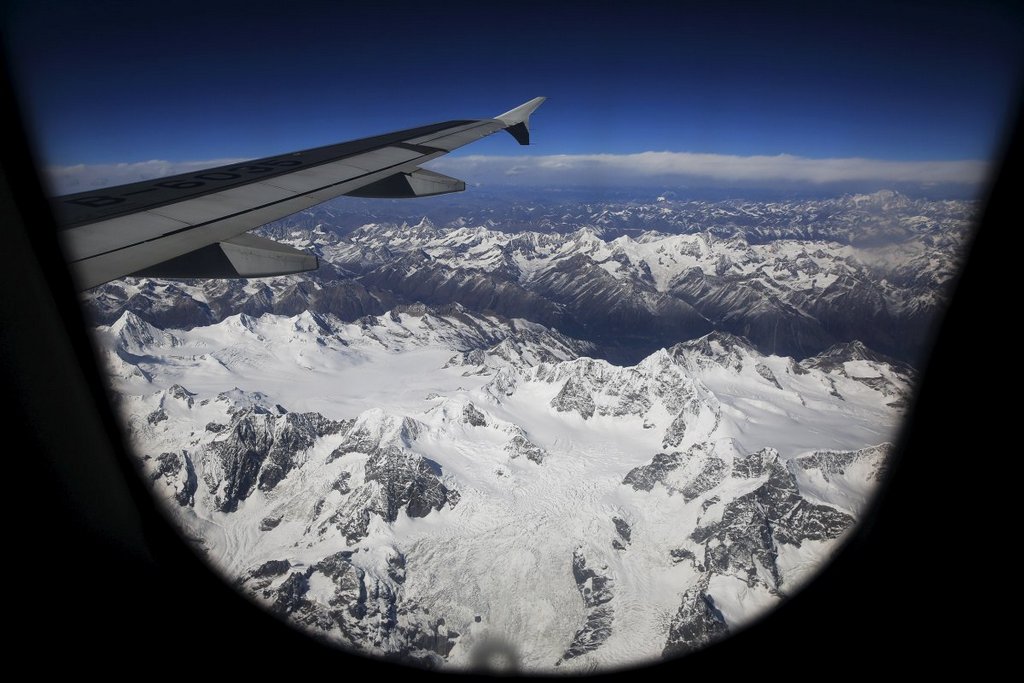
More over half of Asia gets its water from the Plateau and its 37,000 glaciers.
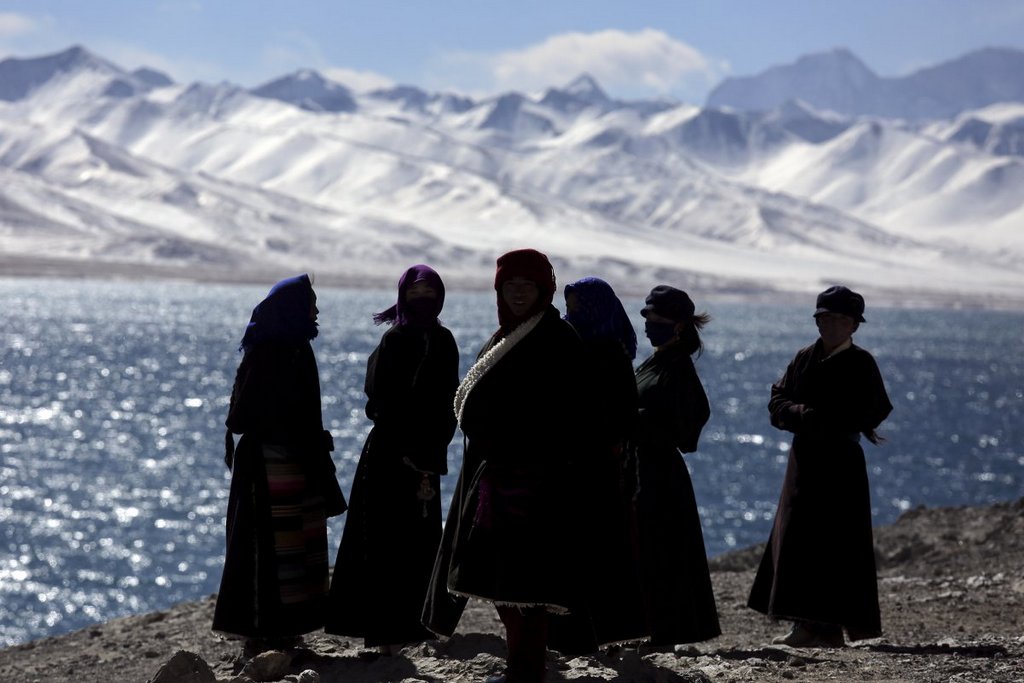
Namtso Lake is revered as a holy site. Its waters are visited by both tourists and Tibetan Buddhists.
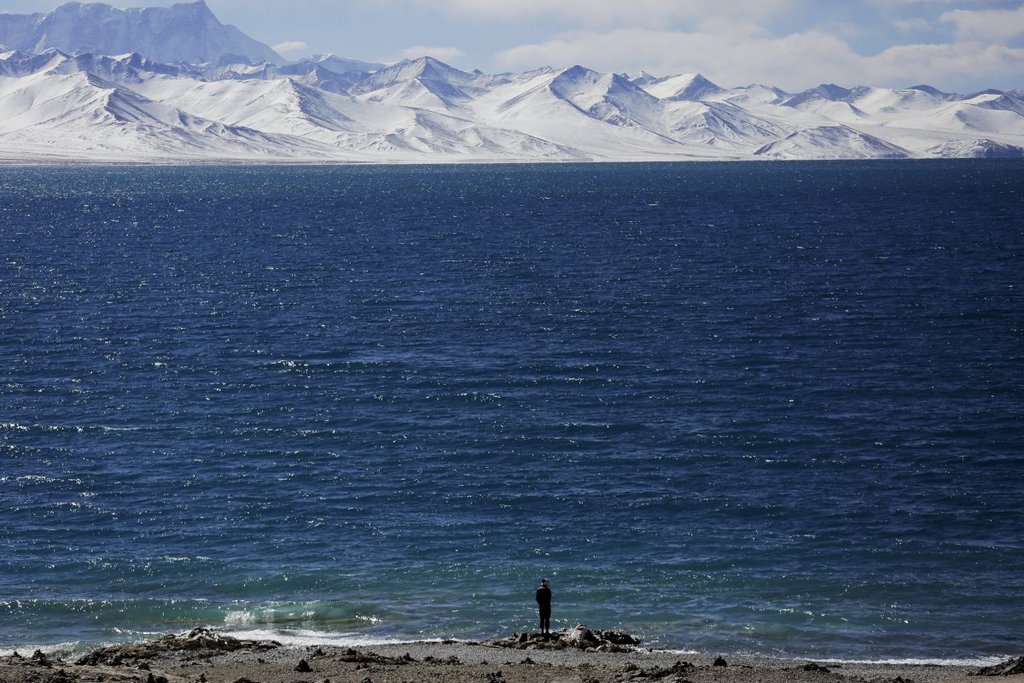
Namtso Lake is visited by a woman and her child. It is the world’s highest saltwater lake, rising more than 15,000 feet above sea level.
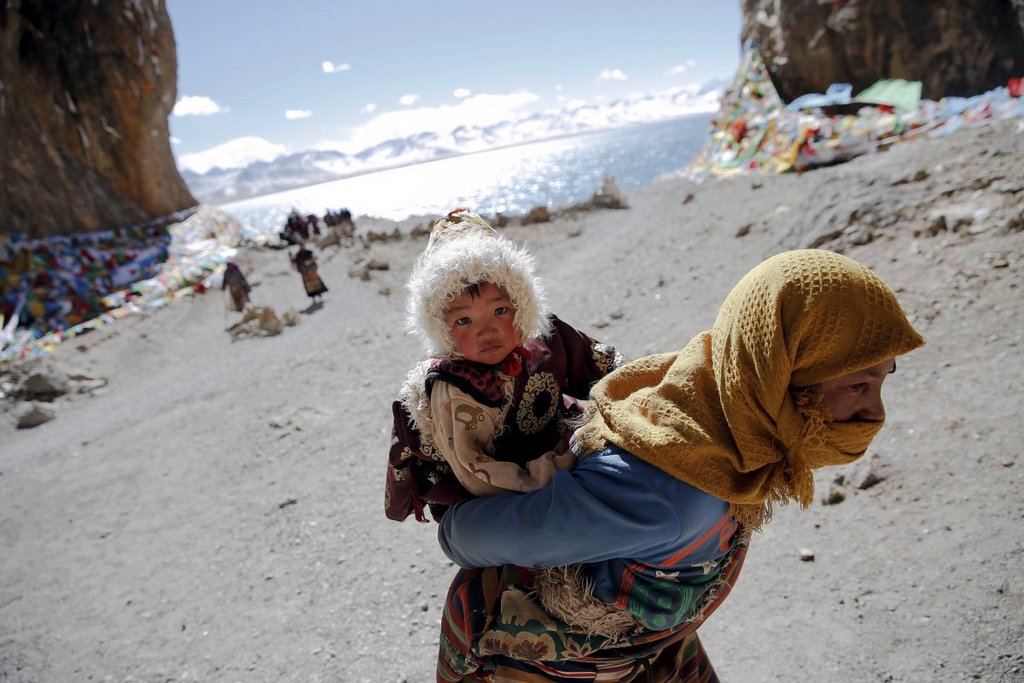
A mother and son pray among the prayer flags by the lake.
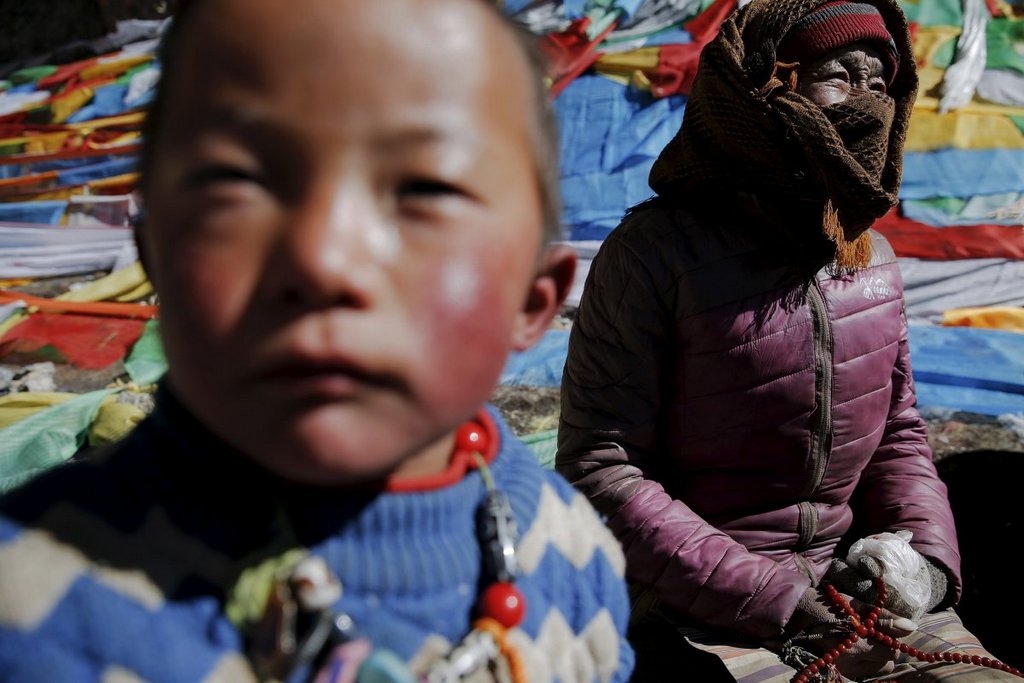
More prayer groups gather at Namtso’s holy springs.
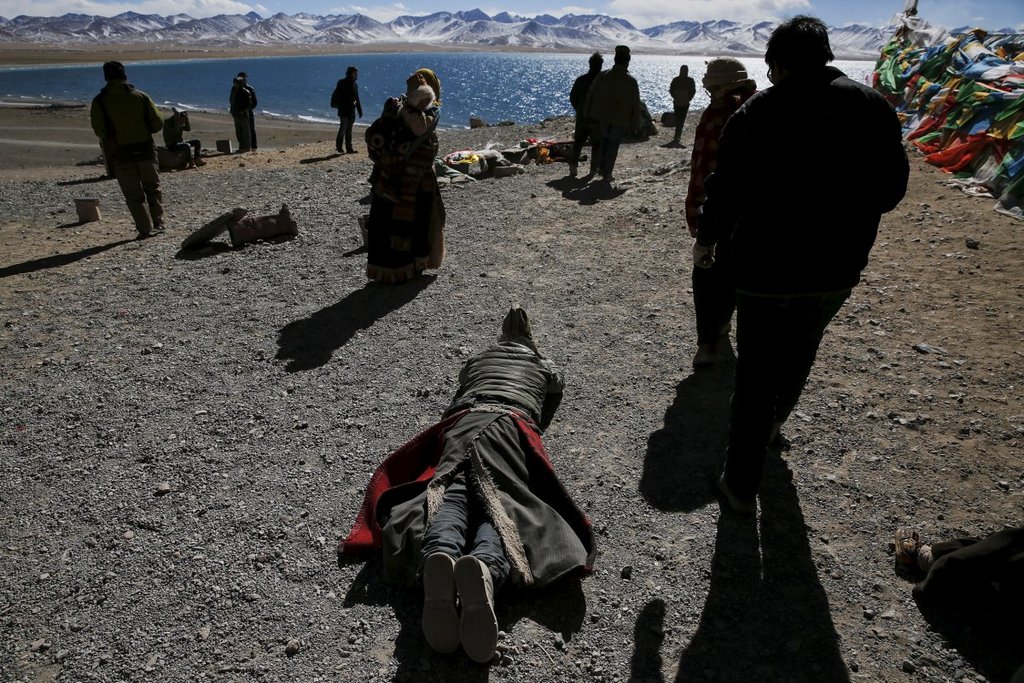
Yak riding is a popular tourist activity.
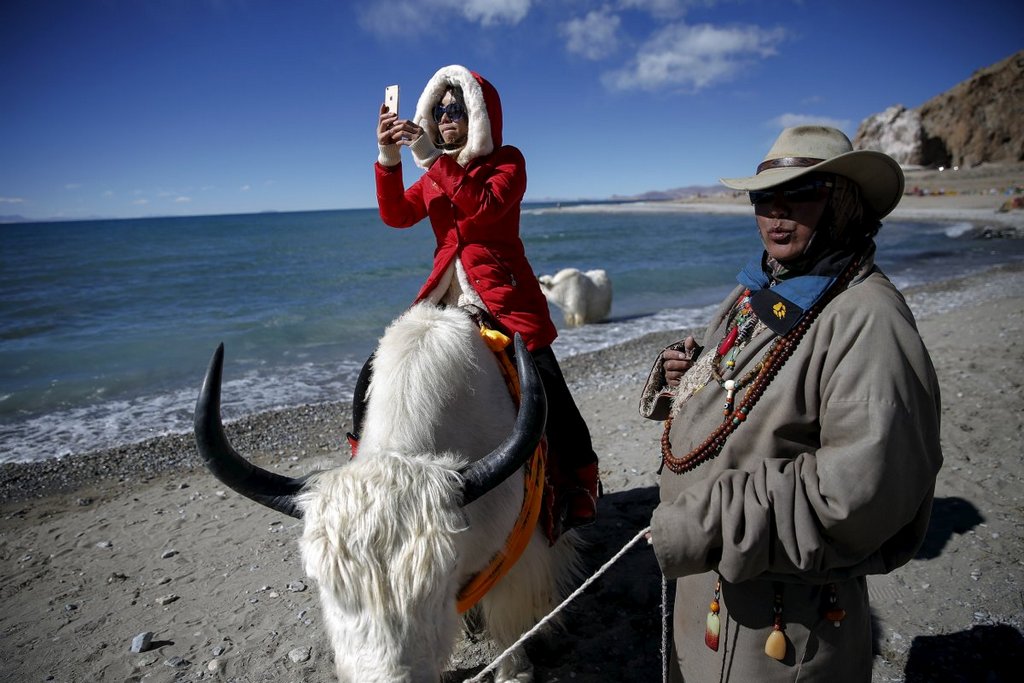
Inside Lhasa, there are about 1,000 chambers, 10,000 shrines, and 200,000 sculptures.
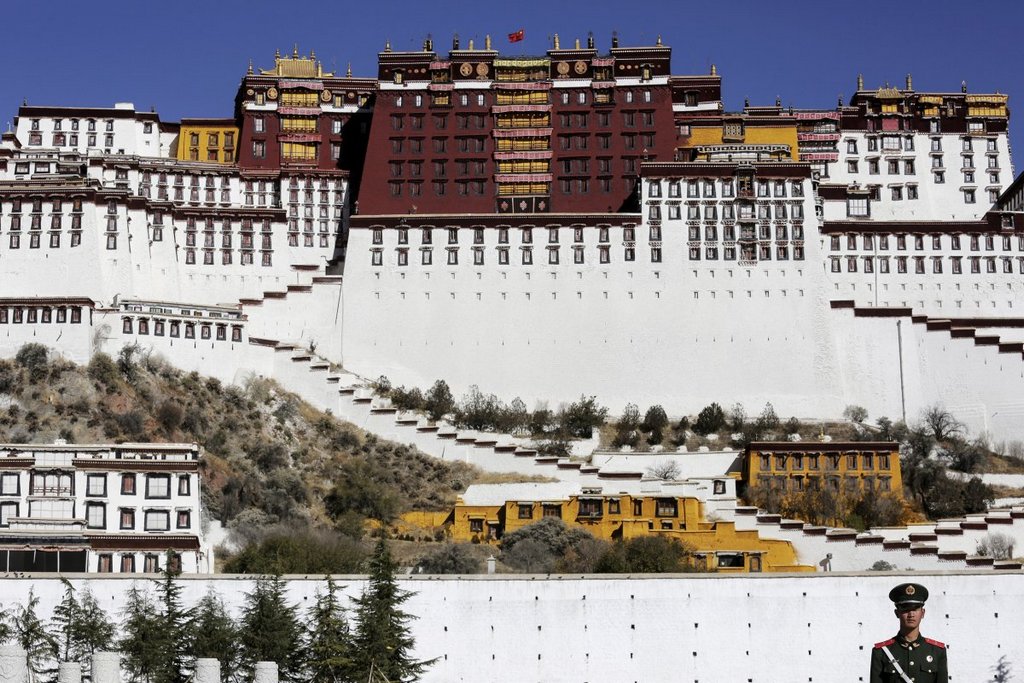
In front of the Potala Palace, this guy is spinning a prayer wheel. The palace, which dates back more than 1,300 years, was once home to the Dalai Lama. It is now a museum.

People come to the palace to worship on the plaza in front of the entrance.
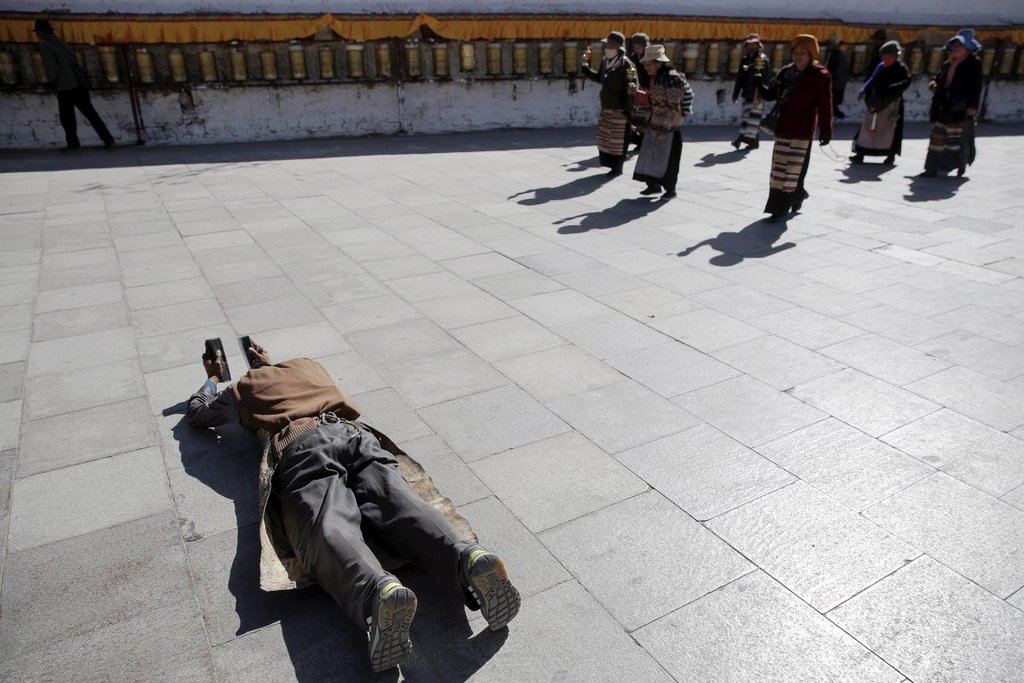
Tourists and locals can also go inside.
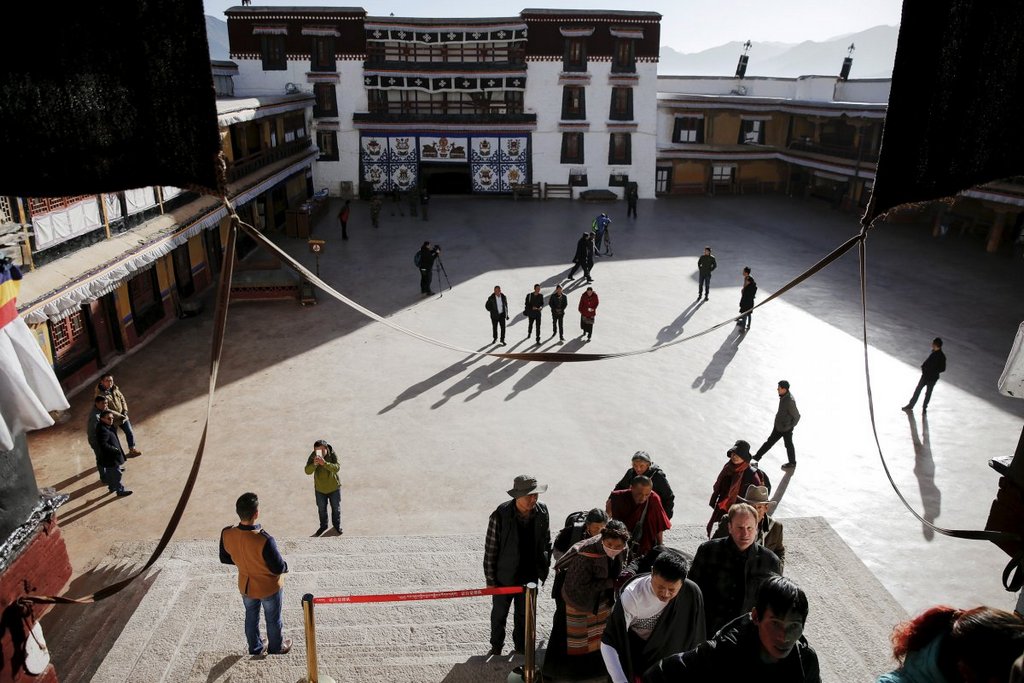
A husband and wife pose for wedding pictures in traditional Tibetan attire near the Nianqing Tanggula mountain pass.
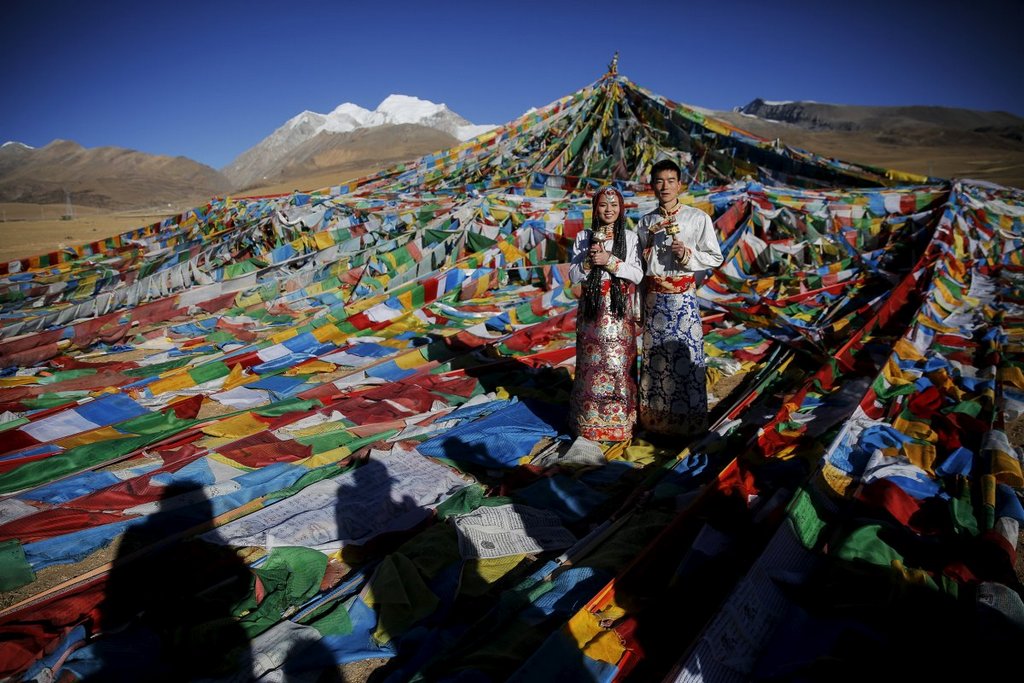
The traditional costume includes an intricate headdress.
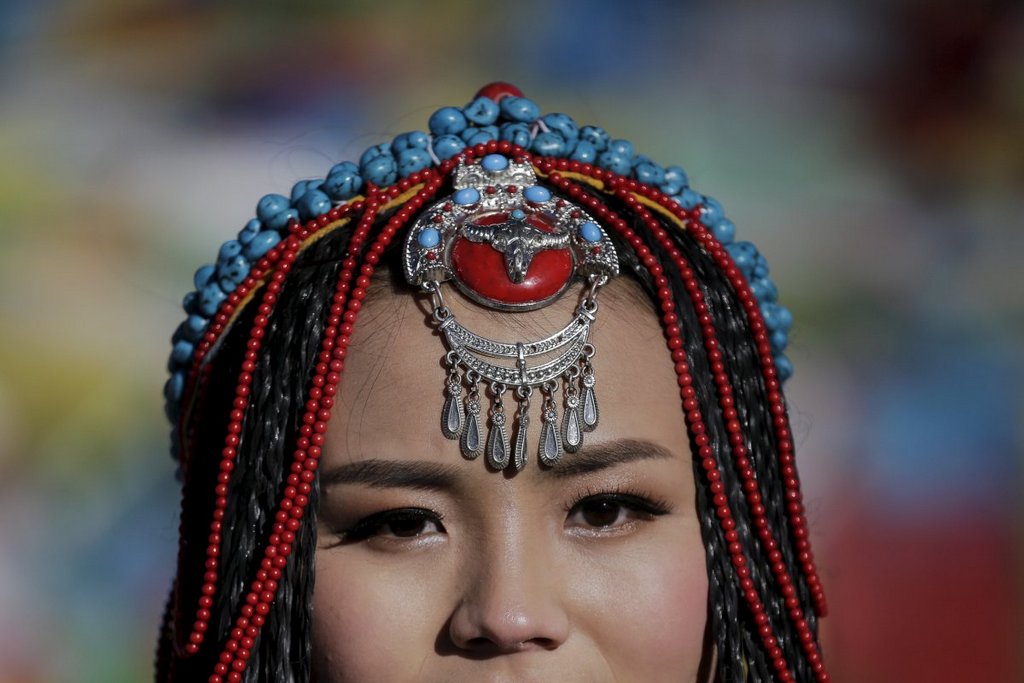
Men gamble during a game of mahjong.
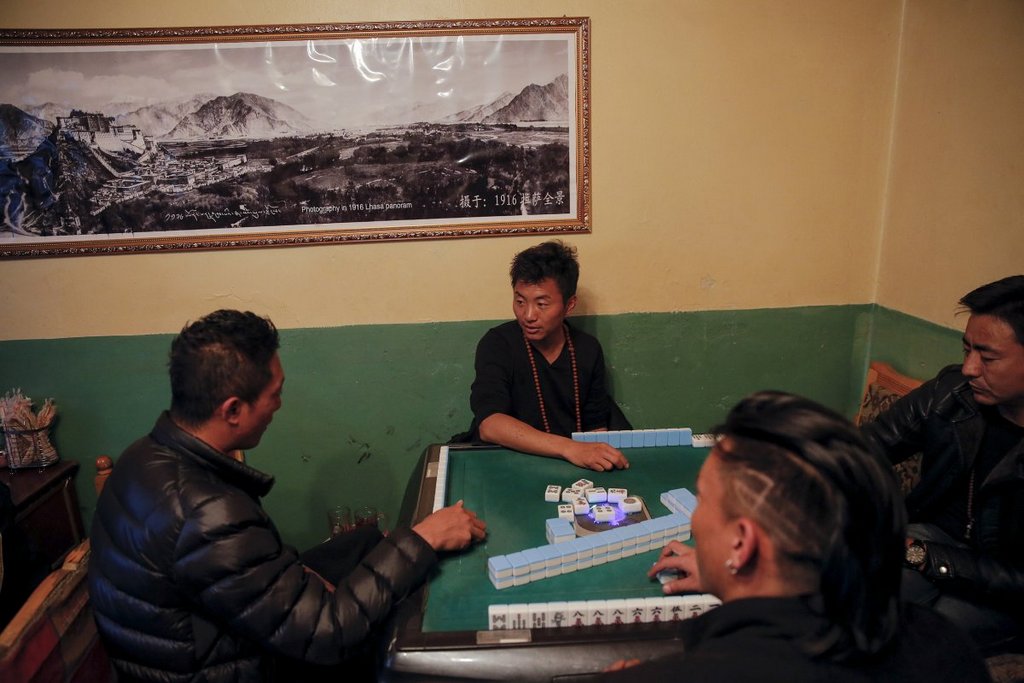
Every day, hundreds of Tibetan Buddhists visit the Jokhang Temple in downtown Lhasa to worship both outside and inside.
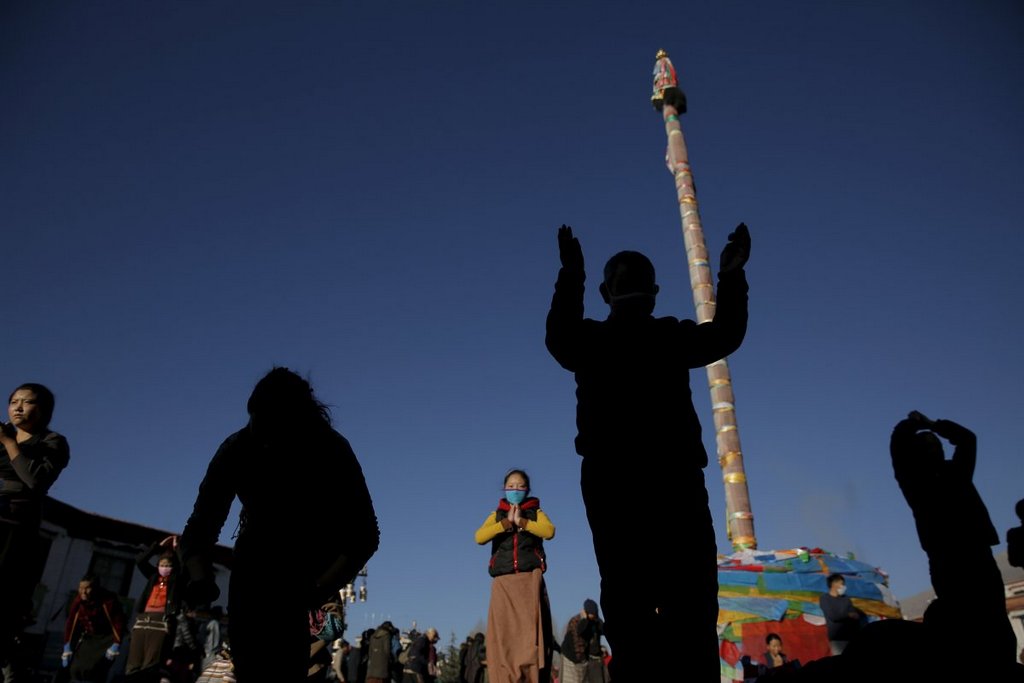
Tibetan prayer flags are wrapped and ready to sell inside a store in Lhasa.
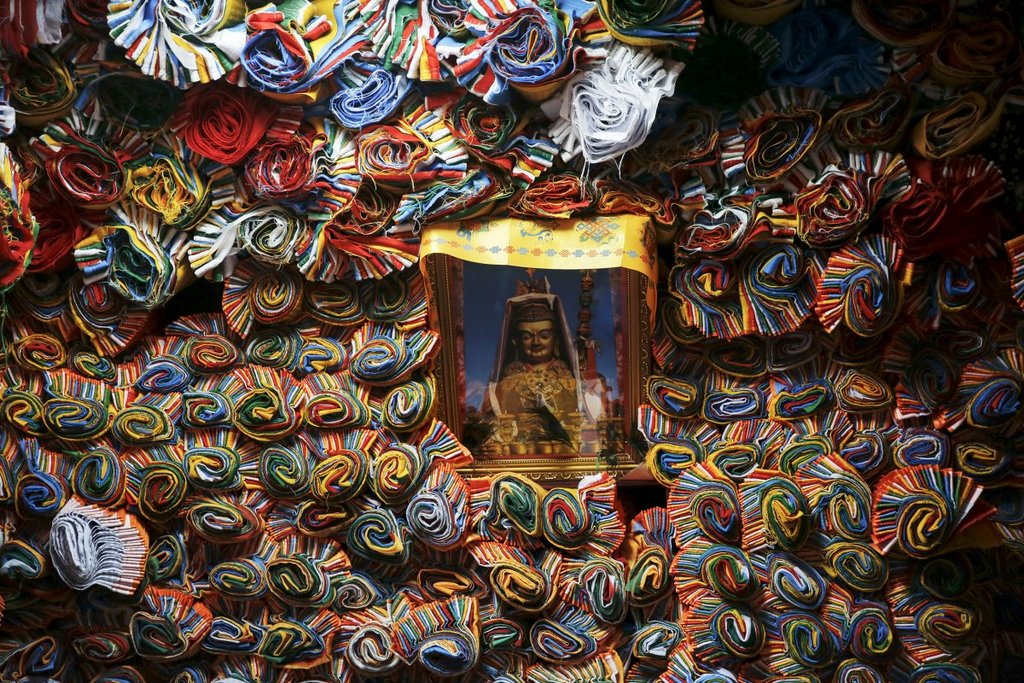
Painted yak skulls are used to decorate homes.
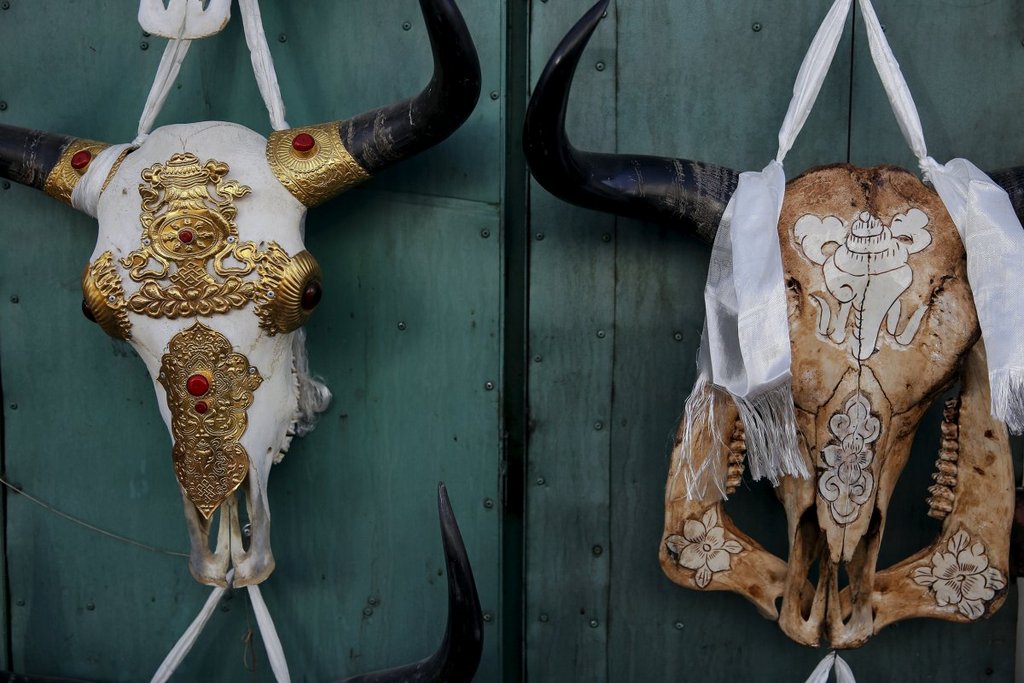
Women wash clothes in a residential courtyard in the older part of Lhasa.
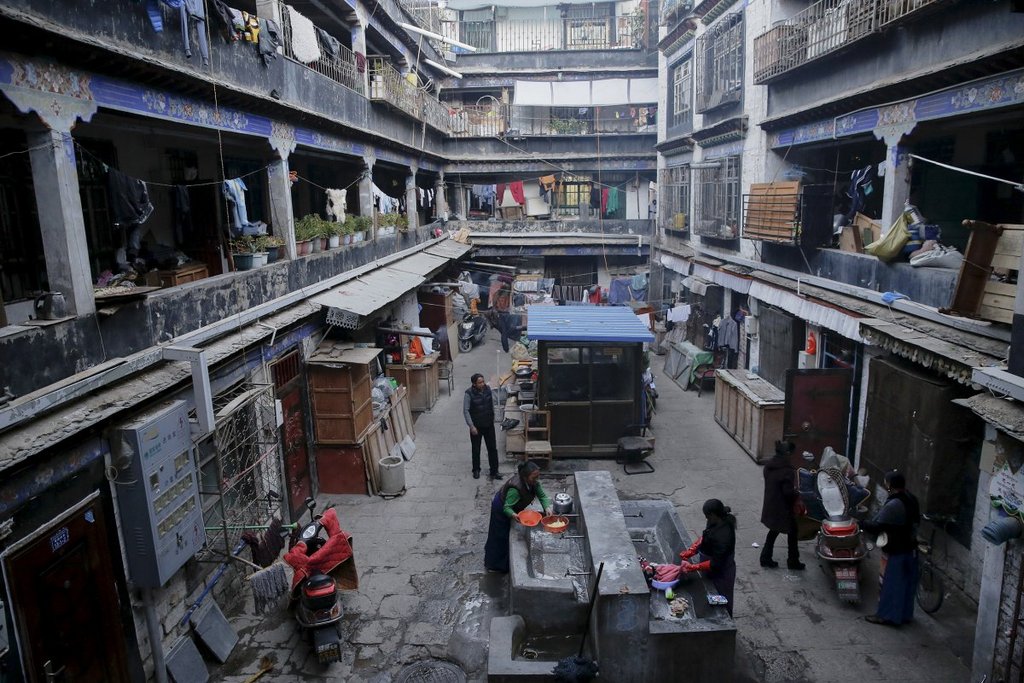
Tibetan Buddhist monks attend a lecture at Sera Monastery in Lhasa.
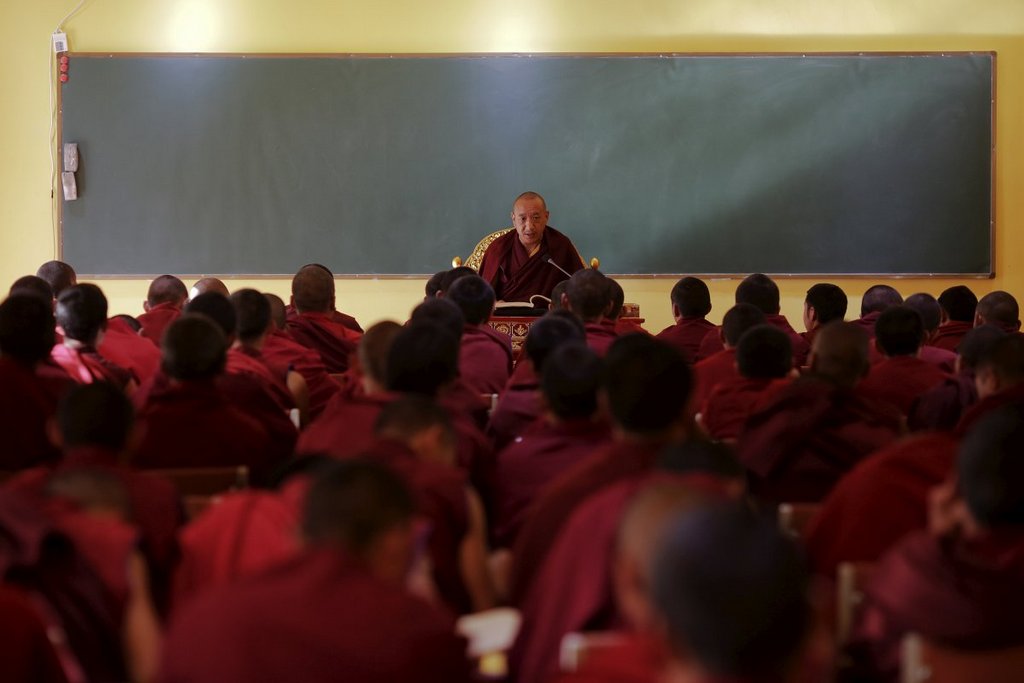
Tibet’s Department of Education is in charge of 73 Tibetan schools, which have a total of 24,000 pupils and 2,200 staff members. Lhasa kids work in their classroom.
